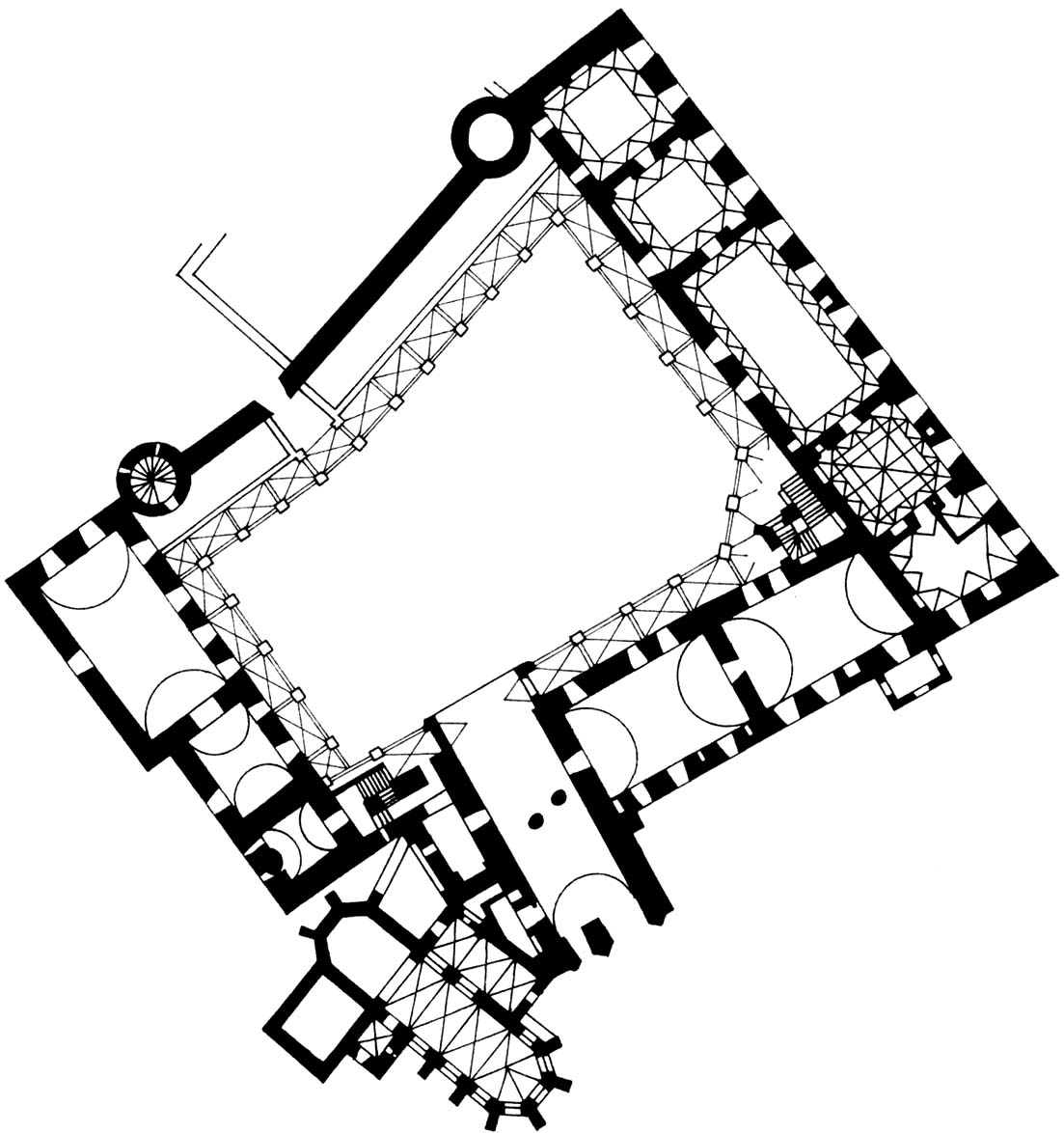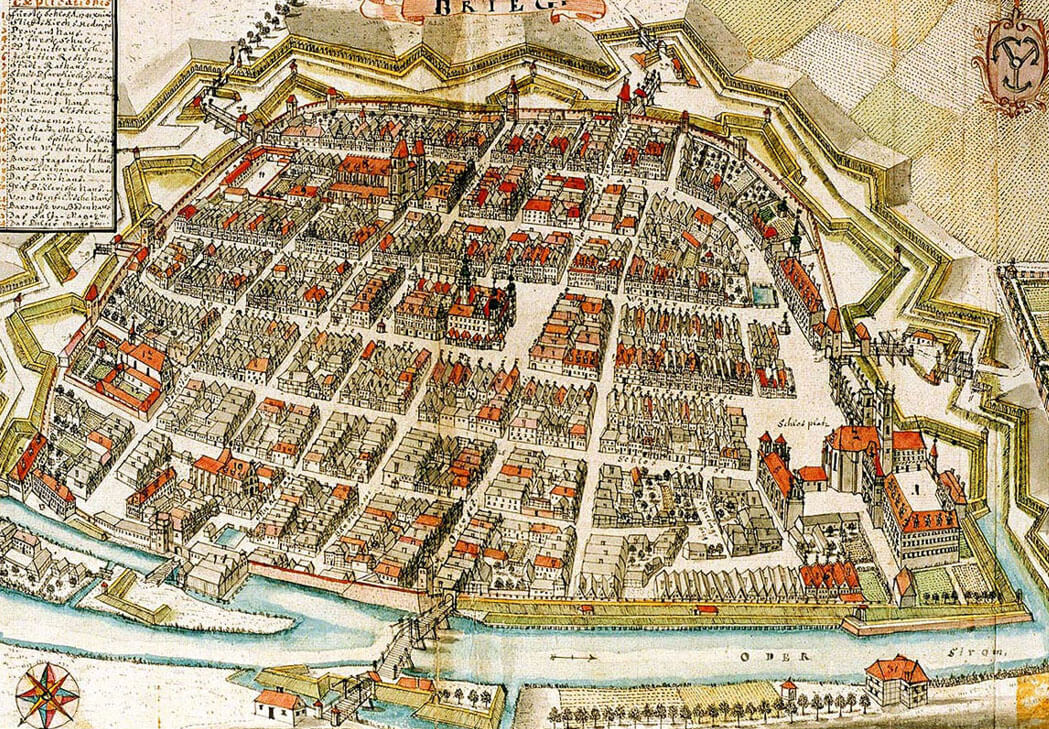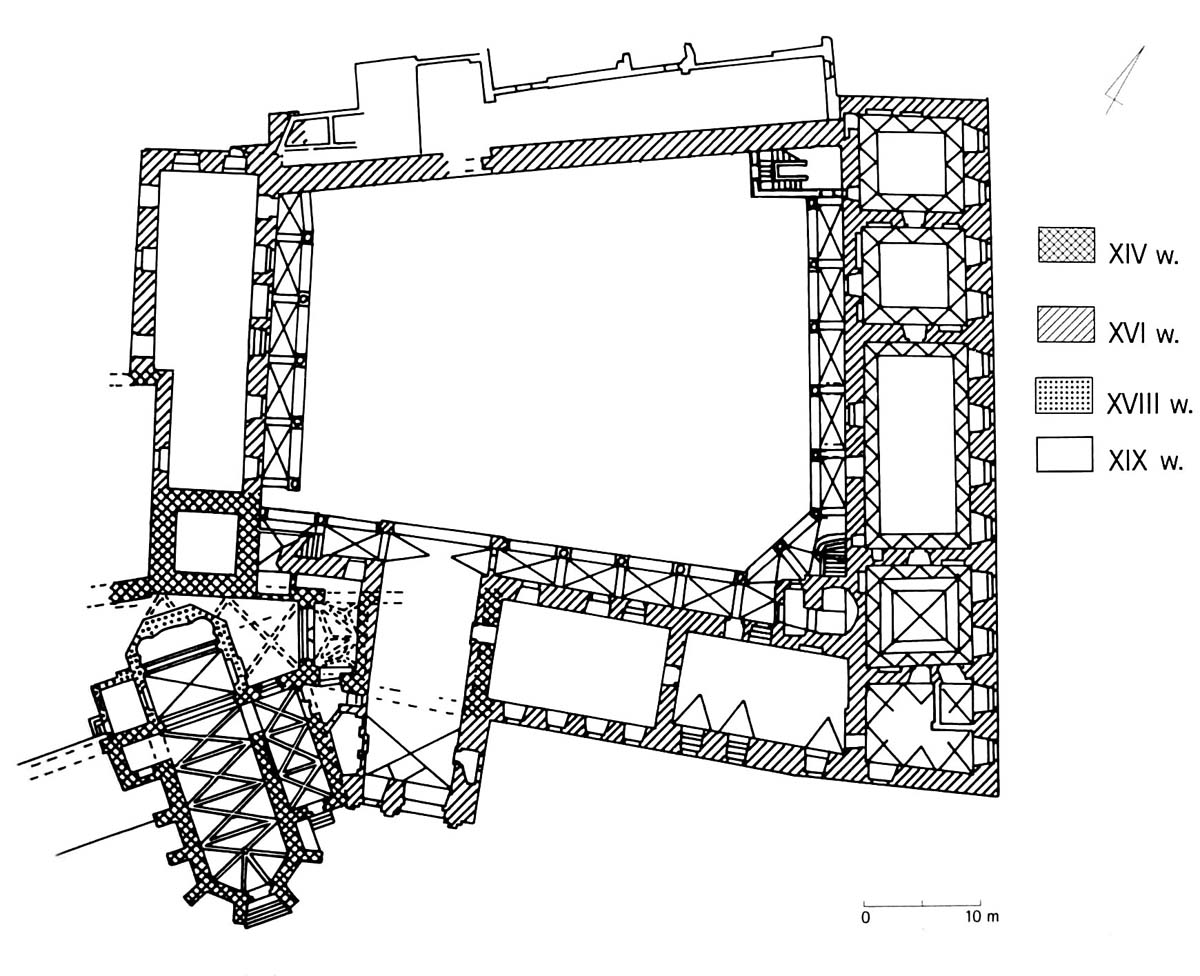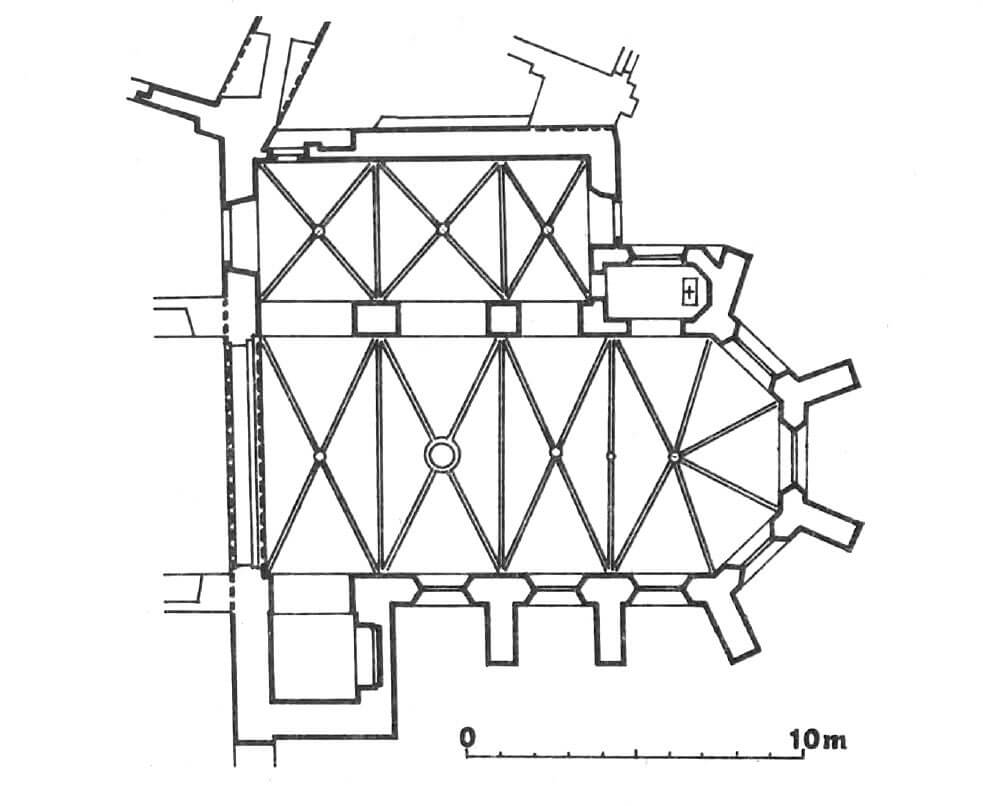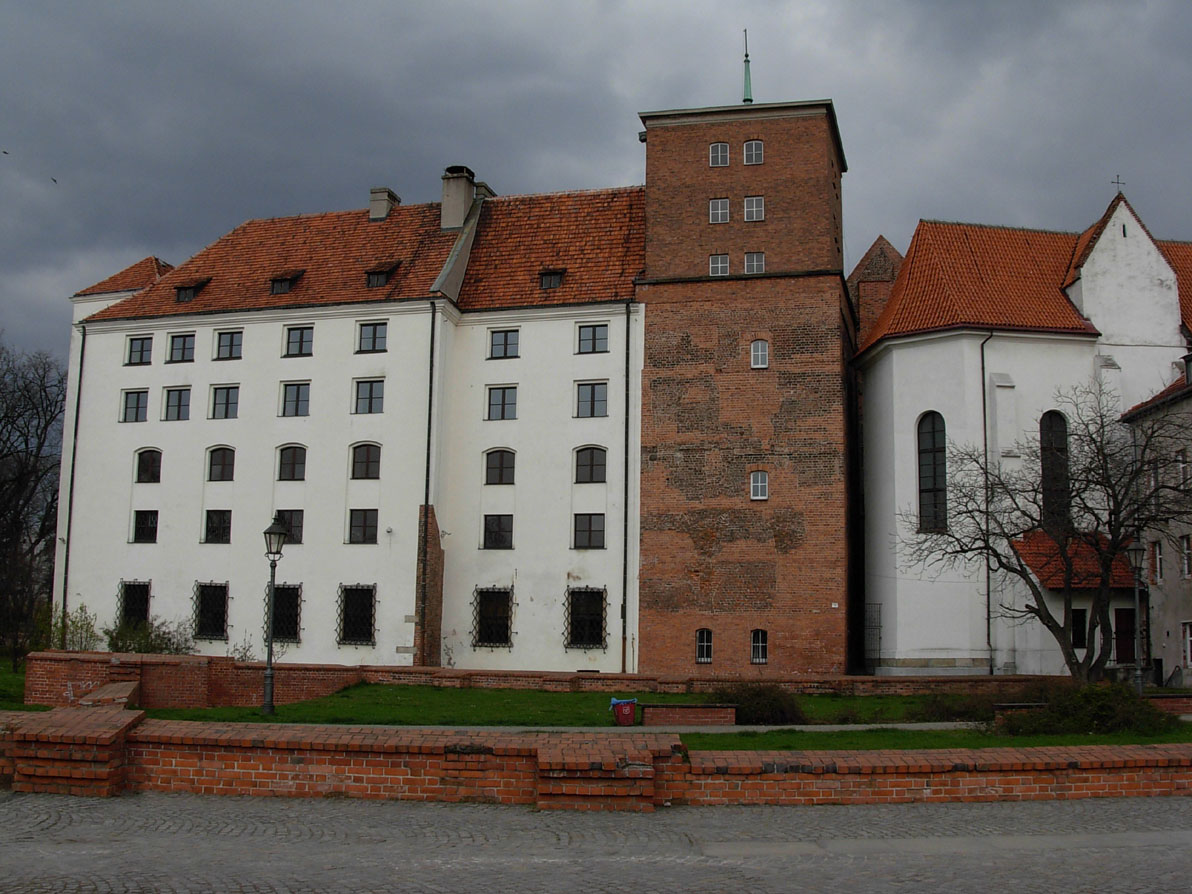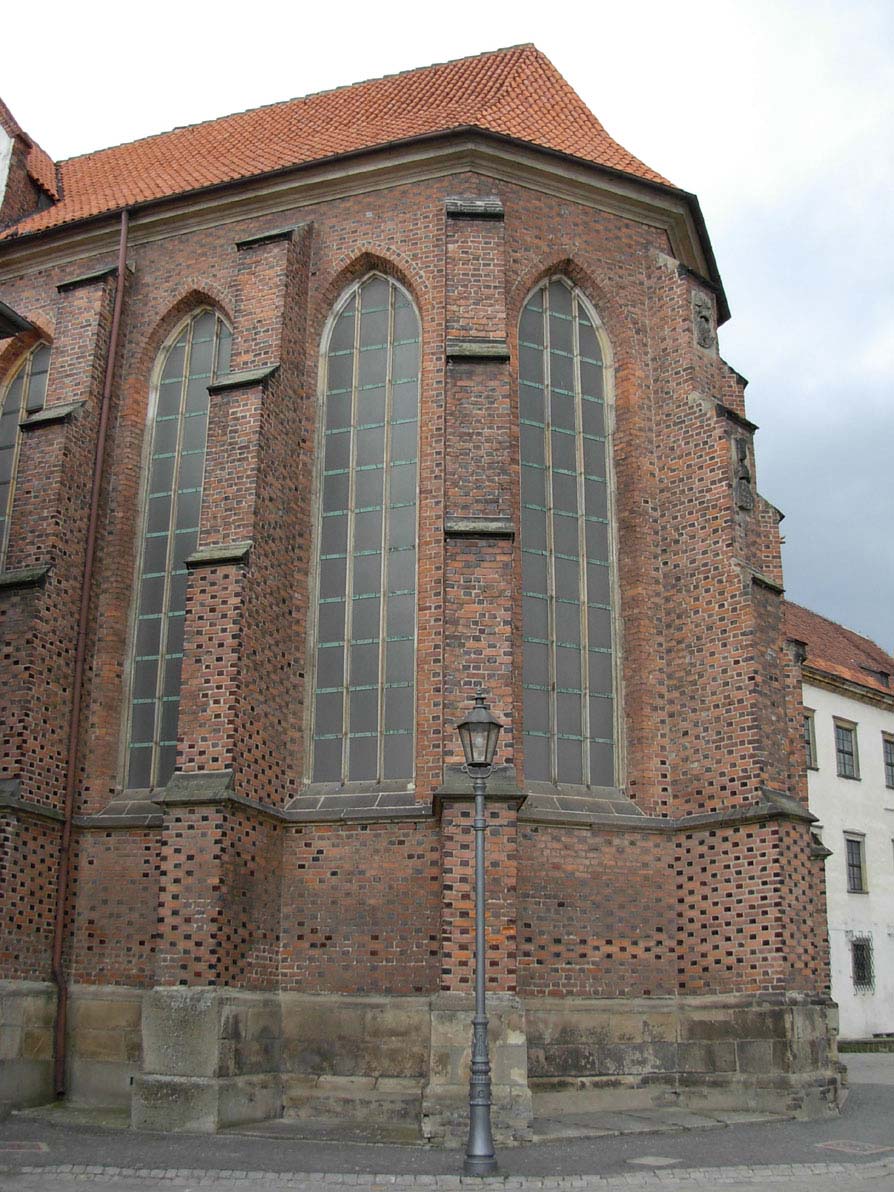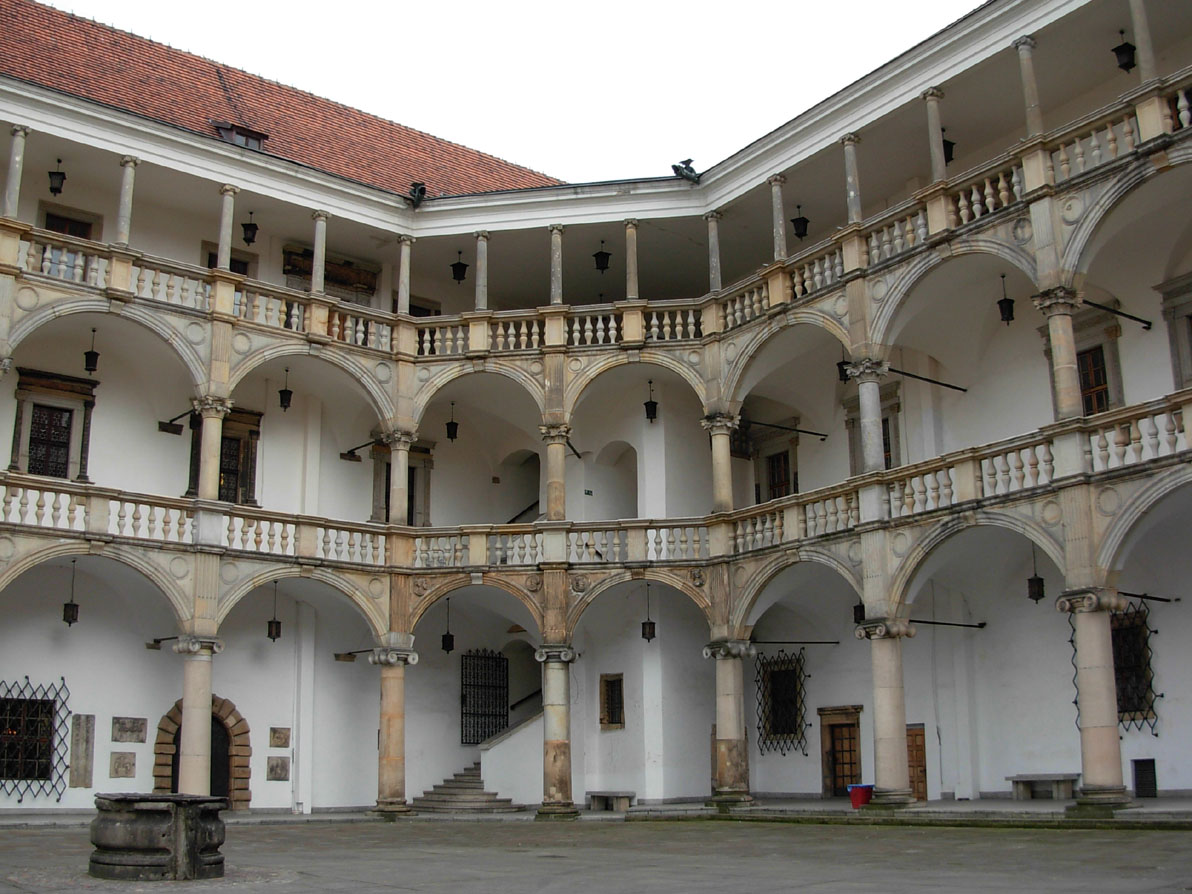History
The princely court in Brzeg (“curia nostra” in the village of “Visokebreg”) was already mentioned in 1235, however, it was not the permanent seat of the ruler or his castellan at the time and probably consisted only of wooden buildings. It was not until around 1300 that a square brick tower, later called the Tower of Lions, was erected by prince Bolko I of Świdnica. Its name came from the finial on which there were stone lions. The castle then began to gain importance because of the destruction of the castellan stronghold in nearby Ryczyn. The next expansion may have been made before 1342 by prince Bolesław III, who lived in the castle permanently, as the first prince of Legnica and Brzeg Duchy. The full form of the medieval castle was made by prince Louis I in the years 1360-1370. The ruler also founded in 1371 a collegiate church on the site of a little earlier castle chapel. Gathering nearly thirty priests, the collegiate church of Brzeg quickly gained a lot of significance, it also was a center of culture and education.
The 15th century did not bring major changes to the architecture of the castle. It was not a successful period for both the town and the castle. Prince Louis II, who lived in it, ran a very expensive lifestyle, spending a fortune on traveling around the world. The recurrent Hussite invasions in 1428, 1429 and 1432 were also a disaster. After the death of Louis II, the Brzeg Castle ceased to function as a residence for a long time, because the entire duchy was pledged to Bernard of Niemodlin. In 1469, Brzeg was bought by Frederic I and combined with the Duchy of Legnica, which again brought down the Brzeg Castle by the castle in Legnica. It was not until the 80s of the 15th century, that some unknown work was undertaken at the castle under the supervision of the architect Ambroż Radewicz.
In the years 1544-1547 there was a thorough reconstruction, giving the castle a renaissance appearance. For the prince Frederic II, the inspiration was Kraków’s Wawel. First, the southern wing was changed, then the eastern wing was erected from the Oder river side. After the death of prince Frederick II, his successor George II continued his work and brought Italian architects James and Francis Parr to the castle. Then, the four-wing complex surrounding the courtyard, was decorated with cloisters. At that time, a gatehouse with bas-relief busts of the Piasts was also built.
In 1675, the last descendant from the Silesian Piasts line, George William, died at the castle and the mansion began to decline. Abandoned castle served as an inn, barracks and warehouse. At the beginning of the nineteenth century, the western wing was destroyed, and subsequent devastation brought the Second World War. The restoration of the castle to its renaissance form began in the 1960s.
Architecture
The Brzeg Castle was located in the northwestern edge of the town, where it was in contact with the oval line of the city fortifications from two sides. Its exact appearance from the Middle Ages is not fully known. Only its main elements can be distinguished: the four-sided outline of the defensive walls and the huge four-sided Tower of Lions. During the reconstruction of the second half of the fourteenth century, residential buildings moved slightly from the former place at the Wrocławska Gate to the area of the current renaissance palace. The area of older buildings was then given to the newly created collegiate church, the earlier chapel of the Holy Trinity and St. Jadwiga. During Louis I, the main residential building was located on the site of the current southern wing, from the town side, and the main gate was also located on the southern side, on the site of the current renaissance gate.
The Gothic castle chapel touched the longer side with the Tower of Lions and the shorter one with the gate. Its rectangular interior, about 20 meters long, covered several bays of the cross-rib vault. The entrance to it led from the castle (from today’s gate), through a small vaulted porch.
At the time of 14th century extension to the collegiate church, chapel was included as a transept to the emerging new temple, to which the presbyterian part, extended to the southeast, was added. The location of neighboring castle buildings and probably the desire to orient the collegiate altar to the east made the corpus of the new temple stand at an obtuse angle to the transverse nave, that is the former chapel. The Gothic chancel received a three-sided ending, reinforced by buttresses between the windows and in the corners. From the side of the castle gate, there was a two-storey annex on the rectangular plan with a sacristy in the ground floor. The upstairs room contained a gallery open to the presbytery, in which the prince sat at the services. It was connected directly with the castle through the corridor in the north-east corner. From the south side a four-sided tower adjoined the collegiate church. The interior of the chancel, the nave and the north annex were topped with rib vaults.
Current state
The castle in Brzeg is currently an exceptional monument, one of the most beautiful Renaissance buildings in Silesia. Its current shape comes from the reconstruction and extension carried out in the years 1532 – 1560. Among the original medieval elements you can see only the four-sided Tower of Lions and the Gothic chancel of castle chapel. The restored halls contain the Museum of Silesian Piasts and the castle is open to visitors. You can see here collections of sculptures, Silesian painting, medallions and numismatics, parchments and old volumes. Open on Tuesdays, Thursdays, Fridays, Saturdays, Sundays from 10.00 to 16.00, and on Wednesdays from 10.00 to 18.00.
bibliography:
Leksykon zamków w Polsce, red. L.Kajzer, Warszawa 2003.
Zlat M., Brzeg, Warszawa 1979.
Zlat M., Zamek piastowski w Brzegu, Opole 1988.

